Sainte-Chapelle - Paris
Aug 20, 2019 10:15:49 #
Wikipedia:
The Sainte-Chapelle (French pronunciation: [sɛ̃t ʃapɛl], Holy Chapel) is a royal chapel in the Gothic style, within the medieval Palais de la Cité, the residence of the Kings of France until the 14th century, on the Île de la Cité in the River Seine in Paris, France.
Construction began some time after 1238 and the chapel was consecrated on 26 April 1248.[2] The Sainte-Chapelle is considered among the highest achievements of the Rayonnant period of Gothic architecture. It was commissioned by King Louis IX of France to house his collection of Passion relics, including Christ's Crown of Thorns – one of the most important relics in medieval Christendom, later hosted in the nearby Notre-Dame Cathedral until the 2019 fire, which it survived.[3]
Along with the Conciergerie, the Sainte-Chapelle is one of the earliest surviving buildings of the Capetian royal palace on the Île de la Cité. Although damaged during the French Revolution, and restored in the 19th century, it has one of the most extensive 13th-century stained glass collections anywhere in the world.
History
The Sainte-Chapelle rises above the rooflines of the royal palace. Miniature by the Limbourg brothers, c. 1400
The Sainte-Chapelle or "Holy Chapel", in the courtyard of the royal palace on the Île de la Cité (now part of a later administrative complex known as La Conciergerie), was built to house Louis IX's collection of relics of Christ, which included the Crown of Thorns, the Image of Edessa and some thirty other items. Louis purchased his Passion relics from Baldwin II, the Latin emperor at Constantinople, for the sum of 135,000 livres, though this money was actually paid to the Venetians, to whom the relics had been pawned. The relics arrived in Paris in August 1239, carried from Venice by two Dominican friars. Upon arrival, King Louis hosted a week-long celebratory reception for the relics. For the final stage of their journey they were carried by the King himself, barefoot and dressed as a penitent, a scene depicted in the Relics of the Passion window on the south side of the chapel. The relics were stored in a large and elaborate silver chest, the Grand-Chasse, on which Louis spent a further 100,000 livres. The entire chapel, by contrast, cost 40,000 livres to build and glaze. Until it was completed in 1248, the relics were housed at chapels at the Château de Vincennes and a specially built chapel at the Château de Saint-Germain-en-Laye. In 1246, fragments of the True Cross and the Holy Lance were added to Louis' collection, along with other relics. The chapel was consecrated on 26 April 1248 and Louis' relics were moved to their new home with great ceremony.
As well as serving as a place of worship, the Sainte-Chapelle played an important role in the political and cultural ambitions of King Louis and his successors.[4][5] With the imperial throne at Constantinople occupied by a mere Count of Flanders and with the Holy Roman Empire in uneasy disarray, Louis' artistic and architectural patronage helped to position him as the central monarch of western Christendom, the Sainte-Chapelle fitting into a long tradition of prestigious palace chapels. Just as the Emperor could pass privately from his palace into the Hagia Sophia in Constantinople, so now Louis could pass directly from his palace into the Sainte-Chapelle. More importantly, the two-story palace chapel had obvious similarities to Charlemagne's palatine chapel at Aachen (built 792–805)—a parallel that Louis was keen to exploit in presenting himself as a worthy successor to the first Holy Roman Emperor.[6]
Architecture
The royal chapel is a prime example of the phase of Gothic architectural style called "Rayonnant", marked by its sense of weightlessness and strong vertical emphasis. It stands squarely upon a lower chapel, which served as parish church for all the inhabitants of the palace, which was the seat of government. The king was later recognized as a saint by the Catholic Church. His title became Saint Louis.
Hi,
You would enjoy a nice walk from Notre Dame Cathedral to this church.
Hope you enjoy!
The Sainte-Chapelle (French pronunciation: [sɛ̃t ʃapɛl], Holy Chapel) is a royal chapel in the Gothic style, within the medieval Palais de la Cité, the residence of the Kings of France until the 14th century, on the Île de la Cité in the River Seine in Paris, France.
Construction began some time after 1238 and the chapel was consecrated on 26 April 1248.[2] The Sainte-Chapelle is considered among the highest achievements of the Rayonnant period of Gothic architecture. It was commissioned by King Louis IX of France to house his collection of Passion relics, including Christ's Crown of Thorns – one of the most important relics in medieval Christendom, later hosted in the nearby Notre-Dame Cathedral until the 2019 fire, which it survived.[3]
Along with the Conciergerie, the Sainte-Chapelle is one of the earliest surviving buildings of the Capetian royal palace on the Île de la Cité. Although damaged during the French Revolution, and restored in the 19th century, it has one of the most extensive 13th-century stained glass collections anywhere in the world.
History
The Sainte-Chapelle rises above the rooflines of the royal palace. Miniature by the Limbourg brothers, c. 1400
The Sainte-Chapelle or "Holy Chapel", in the courtyard of the royal palace on the Île de la Cité (now part of a later administrative complex known as La Conciergerie), was built to house Louis IX's collection of relics of Christ, which included the Crown of Thorns, the Image of Edessa and some thirty other items. Louis purchased his Passion relics from Baldwin II, the Latin emperor at Constantinople, for the sum of 135,000 livres, though this money was actually paid to the Venetians, to whom the relics had been pawned. The relics arrived in Paris in August 1239, carried from Venice by two Dominican friars. Upon arrival, King Louis hosted a week-long celebratory reception for the relics. For the final stage of their journey they were carried by the King himself, barefoot and dressed as a penitent, a scene depicted in the Relics of the Passion window on the south side of the chapel. The relics were stored in a large and elaborate silver chest, the Grand-Chasse, on which Louis spent a further 100,000 livres. The entire chapel, by contrast, cost 40,000 livres to build and glaze. Until it was completed in 1248, the relics were housed at chapels at the Château de Vincennes and a specially built chapel at the Château de Saint-Germain-en-Laye. In 1246, fragments of the True Cross and the Holy Lance were added to Louis' collection, along with other relics. The chapel was consecrated on 26 April 1248 and Louis' relics were moved to their new home with great ceremony.
As well as serving as a place of worship, the Sainte-Chapelle played an important role in the political and cultural ambitions of King Louis and his successors.[4][5] With the imperial throne at Constantinople occupied by a mere Count of Flanders and with the Holy Roman Empire in uneasy disarray, Louis' artistic and architectural patronage helped to position him as the central monarch of western Christendom, the Sainte-Chapelle fitting into a long tradition of prestigious palace chapels. Just as the Emperor could pass privately from his palace into the Hagia Sophia in Constantinople, so now Louis could pass directly from his palace into the Sainte-Chapelle. More importantly, the two-story palace chapel had obvious similarities to Charlemagne's palatine chapel at Aachen (built 792–805)—a parallel that Louis was keen to exploit in presenting himself as a worthy successor to the first Holy Roman Emperor.[6]
Architecture
The royal chapel is a prime example of the phase of Gothic architectural style called "Rayonnant", marked by its sense of weightlessness and strong vertical emphasis. It stands squarely upon a lower chapel, which served as parish church for all the inhabitants of the palace, which was the seat of government. The king was later recognized as a saint by the Catholic Church. His title became Saint Louis.
Hi,
You would enjoy a nice walk from Notre Dame Cathedral to this church.
Hope you enjoy!
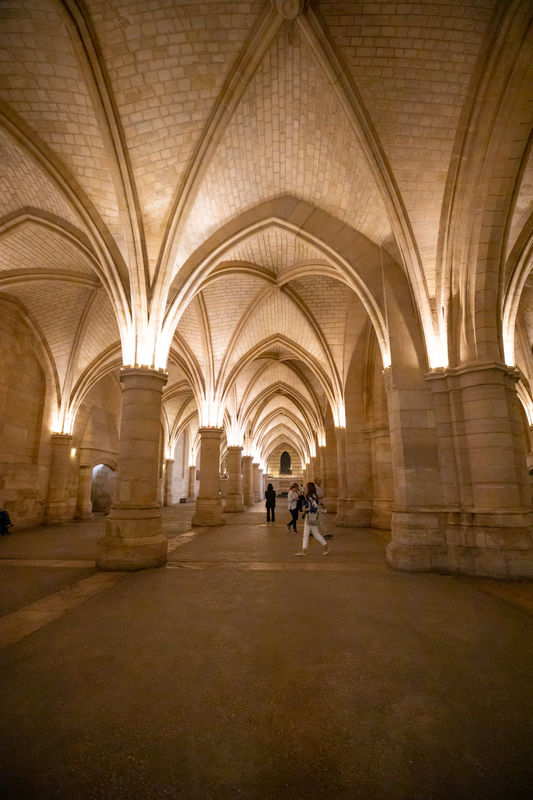
(Download)
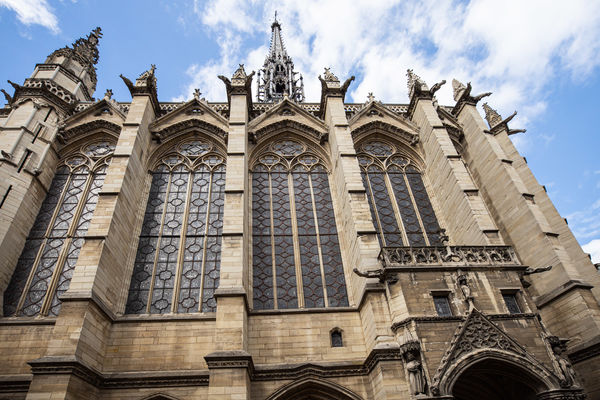
(Download)
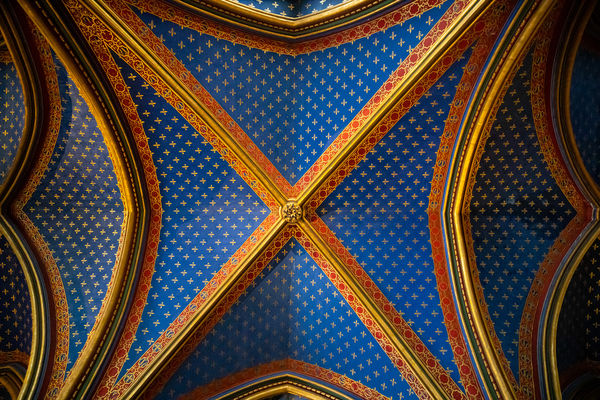
(Download)
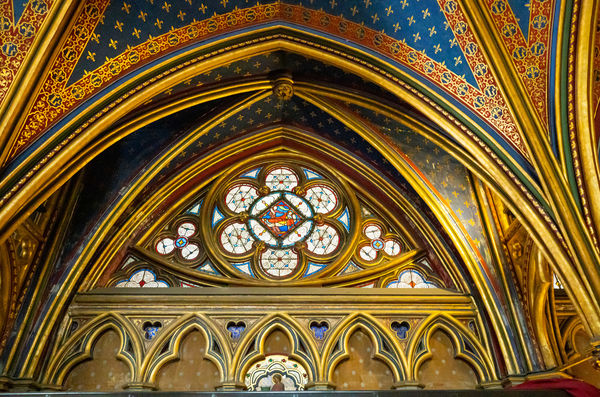
(Download)
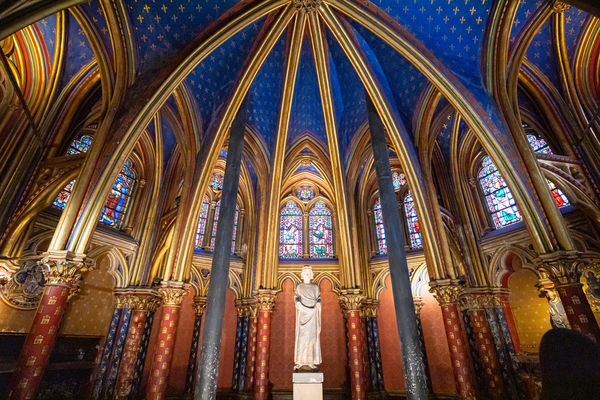
(Download)
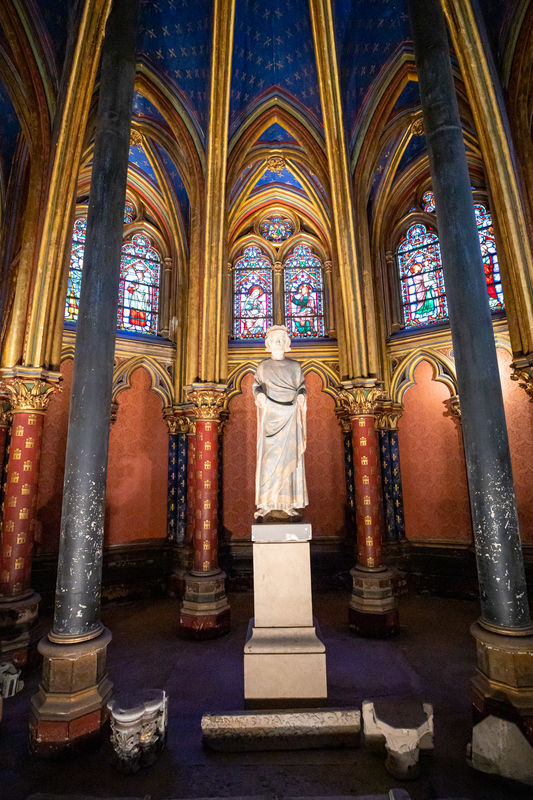
(Download)
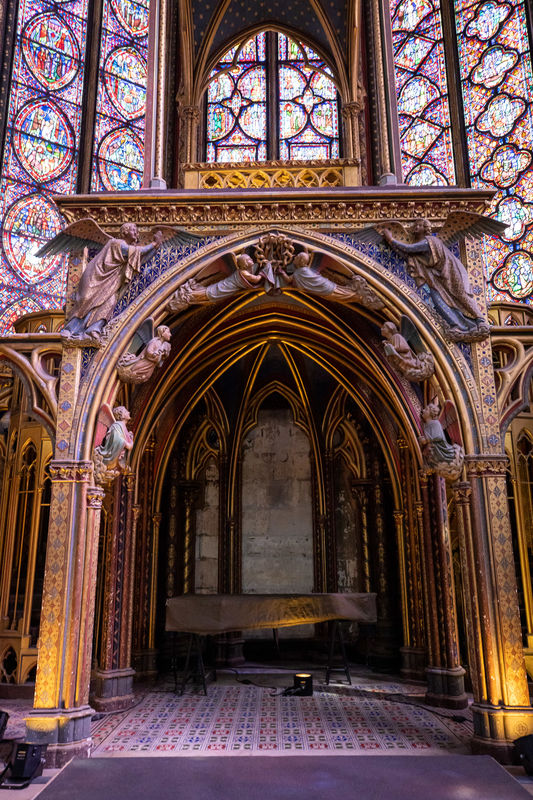
(Download)
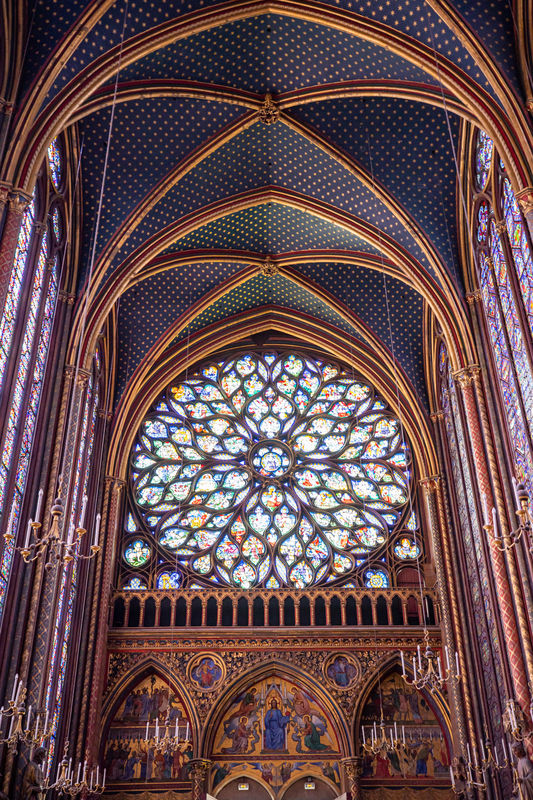
(Download)
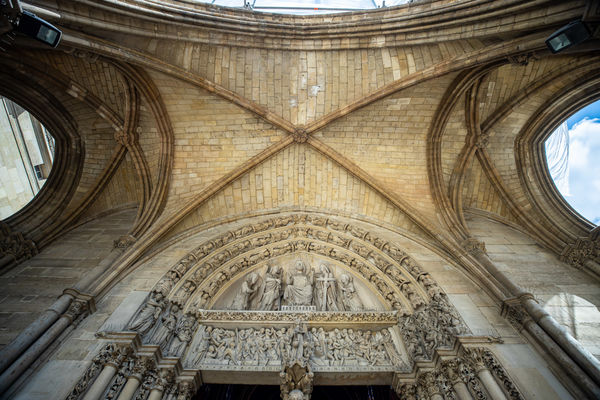
(Download)
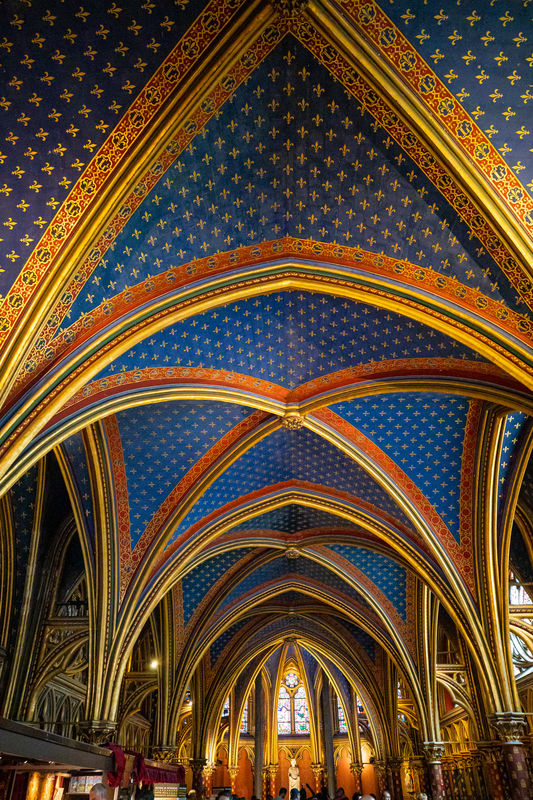
(Download)
Aug 20, 2019 10:18:30 #
Aug 20, 2019 10:34:59 #
Very nice work and narrative.
--Bob
--Bob
Saigon wrote:
Wikipedia: br br The Sainte-Chapelle (French pron... (show quote)
Aug 20, 2019 10:37:15 #
Aug 20, 2019 11:03:30 #
Saigon .., continued excellence .., with the best narrative on the Hog ..
Aug 20, 2019 12:18:55 #
Aug 20, 2019 13:23:45 #
Saigon wrote:
Wikipedia: br br The Sainte-Chapelle (French pron... (show quote)
Masterfully photographed! WOW!
Aug 20, 2019 18:58:03 #
Aug 20, 2019 18:58:18 #
Aug 20, 2019 18:58:34 #
Aug 20, 2019 18:58:49 #
Dr.Nikon wrote:
Saigon .., continued excellence .., with the best narrative on the Hog ..



Aug 20, 2019 18:59:06 #
Aug 20, 2019 18:59:55 #
BrentHarder wrote:
Masterfully photographed! WOW!
Thanks BrentHarder! I love your surfing scenes from CA....
Aug 21, 2019 06:32:49 #
French pronunciation: [sɛ̃t ʃapɛl] ...... I am SO glad you explained this. That really helps..... 
Aside from the snarky sarcasm - very nice photos of sɛ̃t ʃapɛl !

Aside from the snarky sarcasm - very nice photos of sɛ̃t ʃapɛl !
Aug 21, 2019 06:36:18 #
If you want to reply, then register here. Registration is free and your account is created instantly, so you can post right away.








